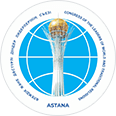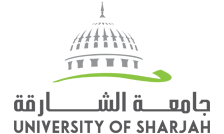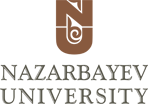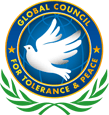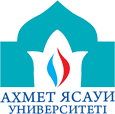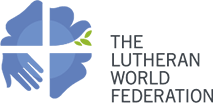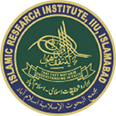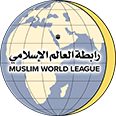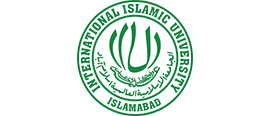Good afternoon, dear guests! We are glad to see you at the “Museum of Peace and Reconciliation”.
Based on the NPJSC “N. Nazarbayev Centre for the Development of Interfaith and Inter-Civilization Dialogue”, the Museum of Peace and Reconciliation operates, aimed at preserving the historical and cultural heritage of the people of Kazakhstan and the modern experience of interreligious and inter-civilizational interaction.
The Museum of Peace and Reconciliation was opened on October 10, 2018, as part of the VI Congress of the Leaders of World and Traditional Religions.
The uniqueness of this museum is that its compositional solutions reflect the history of the formation and development of the values of a culture of peace and harmony and the mutual understanding of people of different beliefs, cultures, and civilizations on the territory of Kazakhstan from ancient times to the present day.
The Museum of Peace and Reconciliation is a museum of a new generation; it uses an innovative approach to exhibition space with the introduction of new technologies.
The museum consists of five halls:
- Hall “The Great Steppe – the Crossroads of Dialogue of Cultures and Religions”;
- Hall “Assembly of the People of Kazakhstan – a Symbol of Unity and Harmony”;
- Hall “Interreligious Dialogue: Congress of the Leaders of World and Traditional Religions”;
- Hall “Leaders of Contemporary Global Spiritual Diplomacy”;
- Atrium “Kazakhstan – the Territory of Peace and Harmony”.
Dear guests, we are now in the first hall - “The Great Steppe - the Crossroads of Dialogue of Cultures and Religions”.
The figurative structure of the exhibition hall contains information that the Kazakh land has been a territory of interaction between different peoples, cultures, and religions since ancient times. The culture of the Kazakh steppe has a deep historical tradition.
The territory of ancient and mediaeval Kazakhstan, thanks to the route of the Great Silk Road that ran through it, was the center of peaceful interaction between various faiths, including world and traditional religions.
Let me introduce you to the section dedicated to Islam.
Currently, about a quarter of the world's population are muslims. The spread of Islam contributed to the revival of ancient science and philosophy.“Islam” is represented in the collection of the hall by a wide variety of religious objects: the collections of the Shamail hall (Highly Honoured Mecca, Genealogy of the Prophet Muhammad, Ship of Nuh, poems of Ahmed).
One of the unique exhibits in this section is the “Twentieth Century Quran”, which is skillfully made by the hand of a master and represents a symbol of the Holy Book of Muslims.The Koran is the main Holy Book of Islam. The exhibition presents Qurans, from miniature ones to an impressively large facsimile of one of the oldest manuscripts, called the “Othman Quran” of the 50 copies of this unique publication, printed in St. Petersburg in 1905, only a few have survived to this day.
Here is a traditional robe of Islam presented to you, presented by the Spiritual Administration of Muslims of Kazakhstan.
Showcase № 1
Шапан
Материалы: тафта, тоқыма бау.
Техникасы: машинамен кестелеу.
Чапан
Материал: тафта, тесьма.
Техника: машинная вышивка.
Chapan
Material: taffeta, braid.
Technique: machine embroidery.
Тақия
Материалы: барқыт, жіптер.
Техникасы: машиналық кесте.
Тюбетейка
Материал: бархат, нити.
Техника: машинная вышивка.
Skullcap
Material: velvet, threads.
Technique: machine embroidery.
Кітап
Құран., 604 бет, араб тілінде.
Материалы: қағаз, картон, таспа (бетбелгі).
Техникасы: типографиялық басып шығару, алтынмен бедерлеу.
Қазақстан мұсылмандары діни басқармасынан.
Книга
Коран., 604 стр., на арабском языке.
Материал: бумага, картон, лента(закладка).
Техника: типографская печать, тиснение золотом.
от Духовного управления Мусульман Казахстана.
Book
Quran, 604 pp., in Arabic.
Material: paper, cardboard, ribbon (bookmark).
Technique: typographical printing, gold stamping.
from the Spiritual Administration of Muslims of Kazakhstan.
Showcase № 2
Құран
Швейцария Ислам мәдени қорының Бас директоры
Фахд Зафианның сыйлығы.
Коран
В дар от Генерального директора Исламского культурного фонда в Швейцарии Фахд Зафиан.
Quran
Gift from the Director General of the Islamic Cultural Foundation in Switzerland, Fahd Zafian.
The next section of the exhibition, “History of Religion in Exhibits”, is Judaism. Judaism was the first monotheistic religion to emerge. The history of Judaism, which dates back more than 3,000 years, is divided into three periods: biblical, talmudic, and rabbinic. To this day, the Tanakh remains practically the only source of information about the history of the Jews.
Today, the Chabad Lubavitch movement operates in Kazakhstan. Since 1994, the Chief rabbi of Kazakhstan has been Rabbi Yeshaya Elazar Cohen.
The showcases feature objects of Jewish ritual use:
Showcase № 3
Next, you will see the Shofar, a Jewish ritual wind musical (signal) instrument made from an animal horn. It has a very ancient history and tradition of use, dating back to the prophet Moses. It is blown during synagogue services on Rosh Hashanah (Jewish New Year), Yom Kippur (Judgement Day, or Day of Atonement), and on a number of other occasions.
The shofar was made in ancient times, and now only natural horn material is used in its production.
There is a certain list of animals from which it is allowed to make shofar. These are domestic and wild sheep and goats, as well as gazelles and antelopes. The use of cow horns for this purpose is strictly prohibited because of the allusion to the sin of the “golden calf”, which Satan can remind the Almighty of at the moment of forgiveness of sins. The shape and sound of the shofar directly depend on the horn of the animal the instrument was made from. There are also differences in the traditions of processing the horn, as well as small details of its design, which depend, first of all, on the customs of the Jewish communities that used the instrument.
The tip of the shofar horn is cut off or drilled. The shofar blower uses this hole to produce sound. There are cases when the tip of the horn is shaped into a simple pipe mouthpiece.
In ancient times, the shofar was used as a signaling instrument for convening people and announcing important events, as well as during war.
Шофар
Еврей салттық үрмелі музыкалық (сигналдық) аспабы
Материалы: мүйіз, шыны.
Техникасы: қалыптау, қаптау, бұрғылау.
Шофар
Еврейский ритуальный духовой музыкальный
(сигнальный) инструмент
Материал: рог, стекло.
Техника: формовка, скобление, сверление.
Shofar
Jewish ritual wind musical (signal) instrument
Material: horn, glass.
Technique: forming, scraping, drilling.
Further, Talit, or thales in Judaism, is a prayer outfit, which is a specially made rectangular veil. The garment in the talit is regarded as a habit in the sanctity of the Torah’s precepts and symbolic submission to the will of God.
In ancient times, the talit, the cape, was a rectangular blanket that served as part of everyday clothing; the brush was attached to its corners according to the biblical recipe for Tzitzit. This cloak was usually made of wool or linen. The more expensive style of talit resembled the Roman pallium (the cape is an element of the liturgical garb of the Pope and the Latin Metropolitan rites of the Catholic Church) worn by wealthy men and teachers of law. By the time of the middle ages, the waistline as part of everyday clothing had gradually fallen out of use and was preserved only as a ritual garment.
Showcase № 4
Талит гадоль. Цицит.
Бұрыштарына цицит жіптері бекітілген ерекше төртбұрышты жапқыш
Материалы: мата - жүн, жібек, жіп.
Техникасы: зауыт өндірісі.
Цицит немесе цицес – бұл Тора төртбұрышты киімнің шеттеріне бекітуді міндеттейтін байламдарға тоқылған жіптер.
Талит гадоль. Цицит.
Особая четырёхугольная накидка, к углам которой прикреплены нити цицит
Материал: ткань - шерсть, шелк, нити.
Техника: фабричное производство.
Цицит или цицес – это нити, сплетённые в пучки, которые
Тора обязывает прикреплять к краям четырёхугольной одежды.
Tallit gadol. Tzitzit.
A special quadrangular cape, to the corners of which tzitzite threads are attached
Material: fabric-wool, silk, threads.
Technique: factory production.
Tzitzit or tzitses are threads woven into bundles, which the Torah obliges to attach to the edges of a quadrangular garment.
Seven-branched candlestick: Menorah, a golden seven-branched temple lamp, which was used during the ritual service in the Jewish Temple (the word “menorah” means “lamp” in Hebrew). The seven-branched candlestick consisted of a central lamp and six symmetrical “branches” extending from it: three on one side and three on the other.
Furthermore, it is believed that the appearance of the menorah is similar to that of a plant growing in Israeli lands. The menorah is said to resemble a type of sage. The menorah was to be lit only with extra virgin olive oil.
Менора ХХ ғ.
Иудаизмдегі Менора: Құдайдың нұры, қорғаныс, даналық, қайта өрлеу, еврей халқы, өмір, иудаизм, сабақтастық, ғажайыпты білдіреді.
Материалы: металл (сары түсті)
Техникасы: қалыптау
Менора ХХ в.
Менора в иудаизме символизирует: божественный свет, защиту, мудрость, возрождение, еврейский народ, жизнь, иудаизм, преемственность, чудо.
Материал: металл (желтого цвета)
Техника: формовка
Menorah XX century
The Menorah in Judaism symbolizes divine light, protection, wisdom, rebirth, the Jewish people, life, Judaism, continuity, miracle.
Material: metal (yellow)
Technique: molding
Passover (Jewish Passover) is a holiday celebrated in honor of the Exodus of the Jews from Egyptian slavery. It was from this moment that the history of the Jewish people began.
The name of the holiday “Passover” is derived from the Hebrew word “passover”, which means “passed by”, “gone”: during the tenth plague, the Almighty, punishing the Egyptians, seemed to “bypass” Jewish homes.
The main tradition of the holiday is the Passover seder - a festive dinner that lasts several hours. During the seder, the story of the Exodus is read in a certain sequence (usually from the book of Haggadah). The main thing on the holiday table is the Passover kearah (in Hebrew, a dish). Symbolic foods are placed on it: a chicken wing (zroa), a boiled egg (beitza), a green salad (maror), a sweet apple salad (charoset), pieces of any vegetable or sprigs of greenery (karpas), grated horseradish (hazeret). And next to the keara, of course, there is always matzo (unleavened Passover bread made from wheat flour in the form of very thin dry flatbreads). They also declare psalms of praise.
Пасха кеара Құтқарылу мейрамына.
Песах мерекесінде седерді өткізуге арналған дәстүрлі тағам.
Керемет ою - өрнектер көк және көк түстерде жасалған.
Материалы: қалың шыны.
Техникасы: қалыптау, күйдіру, шынылау.
Пасхальная кеара к Песаху.
Традиционное блюдо для проведения седера в праздник Песах. Великолепные орнаменты выполнены в голубой и синей гамме.
Материал: толстое стекло.
Техника: формовка, обжиг, глазурование.
Easter Keara for Pesach
A traditional dish for the Passover Seder.
Magnificent ornaments are made in blue and dark blue tones.
Material: thick glass.
Technique: molding, firing, glazing.
Besamim (spice box) - this is used for spices during the Havdalah ceremony. This is a ceremony marking the end of the Sabbath and holy days. During the Havdalah ceremony, aromatic spices are believed to revive the soul after the departure of a special Shabbat soul. The spices that are used for this ceremony are wild myrtle, balsam, jasmine, rosemary, nutmeg, or a mixture of spices. This spice box is one of the earliest known tower-shaped spice boxes. It dates back to the 13th century. The first literary mention of the Havdalah spice container appeared in the 12th century. The use of miniature architectural forms was a common practice in the medieval period and this can be seen both in this object and in censers reminiscent of a ladle or bowl with a handle, lamps, and reliquaries (a container for storing valuable relics).
Салттық тағам
Материалы: металл.
Техникасы: құю.
Ритуальное блюдо
Материал: металл.
Техника: литье.
Ritual dish
Material: metal.
Technique: casting.
Матзаға арналған майлық.
Материалы: ақ мата, түрлі-түсті жіптер (жасыл, сары, қызыл, ақ, алтын), алтын күміс өрім.
Техникасы: тігін, кесте.
Салфетка для мацы.
Материал: ткань белого цвета, цветные нити (зеленого, желтого, красного, белого, золотистого), тесьма золотистого серебристого цвета.
Техника: шитье, вышивка.
Matzo napkin.
Material: white fabric, colored threads (green, yellow, red, white, gold), golden silver braid.
Technique: sewing, embroidery.
The Chief Rabbi of Kazakhstan E. Cohen donated all exhibits of Jewish ritual use.
Orthodox section
In addition, in front of you is the traditional attire of followers of Orthodox.
Orthodoxy is the second most popular traditional religious denomination in the Republic of Kazakhstan. The revival of the Orthodox Church in Kazakhstan began after the republic gained state independence. The Feast of the Nativity of Christ (January 7) is an official holiday in the republic. To strengthen interreligious and interethnic peace in Kazakhstan, state-confessional relations are developing, and interfaith dialogue is being conducted.
Showcase № 5
“St. Mother of God Hodegetria”
Hodegetria Icon of the Mother of God translated from Greek means “guide”; it has been known in Rus' since ancient times.
According to legend, the Apostle Luke, including the “Hodegetria”, painted the first icons of the Mother of God.
Икона
«Иконотехника» шеберханасының компаниясы (Грекия)
Материалы: күміс 925 сынама, сары түсті металл, бояу, ағаш.
Техникасы: қолдан жасалған, нақыштау.
Икона
Мастерская компании
«Иконотехника» (Греция)
Материал: серебро 925 пробы, металл желтого цвета, краска, дерево.
Техника: ручная работа, чеканка.
Icon
Workshop Company “Icontechnika” (Greece)
Material: 925 sterling silver, yellow metal, paint, wood.
Technique: handmade, chasing.
As a gift from the Senate of the Parliament of the Republic of Kazakhstan.
Showcase № 6
The Orthodox Church vestments of a priest are presented in the showcase.
Vestments are sacred garments in which Orthodox priests, clergymen, and monastics perform divine services.
The blue color symbolizes the purity of the sky, and the image of the Blessed Virgin Mary, and is used on many Mother of God holidays. The robes of metropolitans are blue. It can have shades up to blue.
The liturgical clothing of the Priest consists of:
- Felony – chasuble (outer liturgical vestment without sleeves);
- Epitrachelion (long ribbon);
- Legguard;
- Belts;
Дін қызметшісінің қызметтік киімі
Материалы: зерлі жібек мата.
Техникасы: машинамен кестелеу.
Богослужительная одежда Священника
Материал: ткань парча.
Техника: машинное шитье.
Priestly clothes
Material: brocade fabric.
Technique: machine sewing.
Father Dmitry donated this robe from the Assumption Cathedral.
Protestantism is one of the three main Christian denominations, along with Orthodoxy and Catholicism. In addition to the conservative branch - Lutheranism, there are many others. Baptists, Pentecostals, Calvinists are also Protestants. Protestantism is the youngest of the three faiths, appearing in the 16th century thanks to Martin Luther.
Protestantism is a much-ramified religious movement, consisting of dozens of denominations and movements.
In pre-revolutionary Kazakhstan, Protestantism was represented by four denominations - Lutheranism, Baptism, Mennonites and Adventism. Protestantism in Kazakhstan has deep roots. The Germans, especially the Lutherans, then the Mennonites, Baptists and Adventists, represented the first Protestant groups in Kazakhstan.
The first Protestants on the territory of modern Kazakhstan were Lutheran Germans who served in the Russian army. They appeared in the region in mid. 18 th century, during the annexation of Kazakhstan to the Russian Empire, they settled in military forts and army garrisons. In addition, the territories that are part of modern Kazakhstan became a place of exile for prisoners of war of Swedes, Poles, and Finns, a significant part of whom were also Protestants. The first Lutheran churches arose in Kazakhstan in the second half of the 19th century. By the end of the 19th century, Lutheran communities existed in Ust-Kamenogorsk, Semey, Petropavlovsk and other cities.
Showcase № 7
The exhibits of Protestantism are presented in the showcase:
The traditional attire of the adherents of Protestantism.
Talar (latin tunica talaris – a black dress with a length up to the heels) was the name given in the old days in Western Europe to the attire of the Catholic clergy, and then the clothes of Protestant pastors, judges, etc. Talar was always worn with a beffchen (a white bib in the form of two flowing ribbons (10-15 cm), known since the 17th century.).
Талар - Евангелиялық Лютеран пастордың литургиялық киімі
Материалы: костюм матасы және барқыт.
Техникасы: машинамен тігу.
Талар - литургическое облачение евангелическо - лютеранского пастора
Материал: ткань костюмная и бархат.
Техника: машинное шитье.
Talar - liturgical vestment of an Evangelical Lutheran pastor
Material: velvet and jersey fabric.
Technique: machine sewing.
Шіркеу шамдары
Материалы: ағаш, бояу.
Техникасы: қалыптау.
Церковные подсвечники
Материал: дерево, краска.
Техника: формовка.
Church candlesticks
Material: wood, paint.
Technique: molding.
A chalice is a church cup used for the consecration of wine and the reception of Holy Communion.
The chalice is kept along with other sacred vessels on the altar, or in a special safe. Usually in Orthodox churches, there are several chalices: on major holidays, when many clergy and many communicants serve, the largest (capacious) chalice is used, from which sometimes the Blood of Christ is poured into other chalices for the communion of the laity into several cups at once.
Рәсімге арналған өрнектері потир ХХ ғ. Ортасы
Материалы: ақ және сары түсті металл.
Техникасы: қалыптау, соғу, ою.
Чаша - потир для причастия с орнаментом. Середина ХХ в.
Материал: металл белого и желтого цвета.
Техника: формирование ковка, гравировка.
Chalice for communion with an ornament. Mid - twentieth century
Material: white and yellow metal.
Technique: forming forging, engraving.
The local religious association “Evangelical Lutheran Church” donated all exhibits of Protestantism.
Catholicism section.
Catholicism is one of the largest Christian denominations. More Catholic milestones in Brazil, Mexico, the USA, and India. The Catholic Church was formed during the 1st millennium AD e. on the territory of the Western Roman Empire and played an important role in the history of Western civilization. Organizational centralization and the largest number of adherents among Christian churches distinguish it. The Catholic Church of the Western liturgical rite, together with the twenty-three Eastern Catholic Churches, constitute one Catholic Church.
All the world's Catholic churches are united under the control of a single center - the Vatican, headed by the Pope. As Catholic teachings say, he is the vicar of Jesus Christ on earth, and his morality and faith are infallible. Since the 12th century, all Catholic clergy have adhered to the vow of celibacy.
From modern historiography, it is known that the first Catholic missionaries on the territory of modern Kazakhstan were Franciscan monks in the 12th and 13th centuries. On behalf of the Roman high priest in 1245, the mission of Giovanni del Plano Carpini was sent to the Great Khans. In 1253-1255 another Franciscan, William of Rubruck, traveled from Constantinople to Karakorum. It is well known that the heads of the Catholic Church, Nicholas IV and John XXII, corresponded with the Turkic khans.
Currently, the Catholic Church in Kazakhstan consists of the Archdiocese-Metropolitan of the Blessed Virgin Mary with its center in Astana, two suffragan dioceses - Karaganda and the Diocese of the Most Holy Trinity in Almaty, as well as the Apostolic Administration of Atyrau. Archbishop Tomas Peta heads the archdiocese metropolis. In addition, in the territory of Kazakhstan and Central Asia, there is an Apostolic Administration for Greek Catholics, under the leadership of Mitred Archpriest Vasily Govera.
The showcases present rare exhibits of Catholicism that are used during worship:
Showcase № 8
Further, in the showcases, you can see elements of liturgical vestments.
Ornat (casula) is an element of the liturgical vestment of a Catholic or Lutheran cleric. The main liturgical vestment of the bishop and priest. Worn over the alba (long religious dress) and stola. The colour varies depending on the holiday. There are two styles of ornate: Romanesque and Gothic. The stola is an element of the liturgical vestment of a Catholic cleric. Silk ribbon, 5–10 cm wide and about 2 metres long, with dalmatica or casula. The colour varies depending on the time of the church year. The bishop and priest place the stola around the neck so that its ends go down to the knees at the same level. Previously, only the bishop could “freely” wear the table during Mass, while the priest was obliged to cross it on his chest, tying the ends with a belt.
Папа Иоанн Павел II - нің Орнаты Италия ХХ ғ.
Архиепископ Томаш Пэта және
Митрополит Эдоардо Канетта арқылы тапсырылған, Астана қаласы.
Материалы: тығыз жібек мата, алтындалған парча.
Техникасы: машинамен тігу, кестемен тігу.
Орнат Папы Иоанна Павла II, Италия ХХ в.
Передана через Архиепископа Томаша Пэта и
Митрополита Эдоардо Канетта г. Астана
Материал: плотная шелковая ткань, парча золотистого цвета.
Техника: машинное шитье, вышивка.
Ornate of Pope John Paul II Italy XX century.
It was handed over through Archbishop Tomáš Peta
and Metropolitan Edoardo Canetta, Astana.
Material: thick silk fabric, golden brocade.
Technique: machine-sewing, embroidery.
Donated from the fund of the National Museum of the Republic of Kazakhstan as part of the opening of the Museum of Peace and Reconciliation.
Папа Иоанн II - нің цингулумы Италия ХХ ғ.
Астана қаласындағы Архиепископ Томаш Пэта және
Митрополит Эдоардо Канетта тапсырған.
Материалы: ақ түсті материал.
Техникасы: бұралау, машинамен тігу.
Цингулум Папы Иоанна Павла II, Италия ХХ в.
Передан через Архиепископа Томаша Пэта и
Митрополита Эдоардо Канетта г. Астаны.
Материал: материал белого цвета.
Техника: кручение, прошивка машиной.
Cincture of Pope John Paul II Italy of the ХХ century.
It was handed over through Archbishop Tomáš Peta
and Metropolitan Edoardo Canetta, Astana.
Material: white material.
Technique: torsion, machine stitching.
Donated from the fund of the National Museum of the Republic of Kazakhstan as part of the opening of the Museum of Peace and Reconciliation.
Baptismal chalice: baptismal bowls and jugs are important items in the Catholic rite, having deep symbolic significance for the Catholic faith. A bowl filled with water symbolises the purity and purification of the believer's state of mind.
Шоқынуға арналған ыдыс
Материалы: металл.
Техникасы: құю.
Чаша для крещения
Материал: металл.
Техника: литье.
Baptism bowl
Material: metal.
Technique: casting.
Donated from the fund of the National Museum of the Republic of Kazakhstan as part of the opening of the Museum of Peace and Reconciliation.
Шоқынуға арналған құмыра
Материалы: металл.
Техникасы: құю.
Кувшин для крещения
Материал: металл.
Техника: литье.
Baptism jug
Material: metal.
Technique: casting.
Donated from the fund of the National Museum of the Republic of Kazakhstan as part of the opening of the Museum of Peace and Reconciliation.
Next, you will see a model of the Roman Catholic Cathedral of the Blessed Virgin Mary of Fatima.
This is a Catholic church located in Karaganda. The initiator of its construction was Bishop Jan Pavel Lenge. In May 2003, the day of remembrance of the Fatima apparitions of the Blessed Virgin Mary, local authorities allocated a plot of land for the construction of the church.
According to the decision of the architects, the cathedral in the German city of Cologne was taken as a model for the future temple. In May 2003, former Secretary of State, Vatican Cardinal Angelo Sodano, performed the rite of consecration of the territory and consecrated the cornerstone of the future cathedral. On September 9, 2012, the solemn consecration of the cathedral took place.
The Karaganda Roman Catholic Cathedral is the only one in Central Kazakhstan and Central Asia. The height of the towers is 40 metres, and between them is a sculpture of the Virgin Mary of Fatima, after whom the cathedral is named.
Қарағанды қаласында
«Фатима Мария - барлық халықтардың анасы»
Рим - Католик соборының макетінің көшірмесі
2009 жылғы Италияның діни қоғамдастығы өкілдерінен, Әлемдік және дәстүрлі көшбасшыларының III Съезіне қатысушылардан
сыйлық ретінде берілді.
Материалы: ағаш, желімделген фанера, құм, бояу, металл, шыны - витраж.
Техникасы: станоктарда кесілген, құммен қапталған, боялған, тоналды.
Копия макета Римско - Католической Кафедрального Собора
«Девы Марии Фатимской - Матери всех народов» в г. Караганде
В дар от Представителей религиозного сообщества Италии, участников III Съезда лидеров мировых и традиционных религий в 2009 году.
Материал: дерево, клееная фанера, песок, краска, металл, стекло - витраж.
Техника: вырезана на станках, покрытие песком, покраска, тонирована.
Copy of the layout of the Roman Catholic Cathedral
“Virgin Mary of Fatima - Mother of all peoples” in Karaganda”
As a gift from the representatives of the religious community of Italy, participants III Congress of the Leaders of World and Traditional Religions in 2009.
Material: wood, plywood, sand, paint, metal, stained glass.
Technique: carved on machines, sanded, painted, tinted.
Section of Buddhism.
Here is the traditional attire of the adherents of Buddhism. The penetration of Buddhism into Central Asia from India, through the territories of Pakistan and Afghanistan, began in the middle of the first century BC.
In 1996, a Tibetan Buddhist centre was founded in Uralsk. According to the results of the 2012 re-registration, there are two Buddhist religious associations in Kazakhstan, in Almaty and in the West Kazakhstan region.
When a Buddhist decides to renounce worldly life and become a monk, he also renounces all the benefits and excesses available to ordinary people. Along with the new way of life, he adopts the special clothes that all monks wear. It is designed to hide individuality and show equality and belonging to the Sangha. The monks' attire is based on approximately the same principle, but in different countries, it is called differently:
- kesa – in Japan;
- senyi – in China;
- kashaya – in other Buddhist territories.
The monastic clothes of Mahayana Buddhists are presented in front of you. Burgundy, brown, and orange-yellow colours are mainly used. Mahayana is worn mainly in countries such as Russia (Buryatia, Kalmykia), India, Tibet, and Mongolia.
The showcases include exhibits of Buddhism:
Showcase № 9
Будда монахтардың рәсімдер мен ғұрыптарға арналған киімі
Материалы: бедерлі суреті бар қоңыр түсті мата
(квадрат ішіндегі шеңбер)
Техникасы: кесу, тігу, тоқу.
Одежда буддийских монахов для церемоний и обрядов
Материал: ткань коричневого цвета с рельефным рисунком
(круг внутри квадрата)
Техника: кройка, пошив, плетение.
Clothes of Buddhist monks for ceremonies and rituals
Material: brown fabric with embossed pattern
(circle within a square)
Technique: cutting, sewing, weaving.
Бамбутан жасалған музыкалық аспап (қолағаш)
Будда рәсімнің басталуы мен аяталуын хабарлайтын аспап.
Материалы: бамбук, жіптер.
Техникасы: қалыптау, жылтырату.
Музыкальный инструмент из бамбука (колотушка)
Инструмент, используемый для сообщения о начале и конце буддийской церемонии.
Материал: бамбук, нити.
Техника: формирование, полировка.
Bamboo musical instrument (beater)
A tool used to communicate the beginning and end of a Buddhist ceremony.
Material: bamboo, threads.
Technique: shaping, polishing.
Бамбуктан жасалған музыкалық аспап (қолағаш) тіреуішімен
Будда рәсімнің басталуы мен аяқталуын хабарлайтын аспап.
Материалы: бамбук, тері, бояулар, жіптер.
Техникасы: қалыптау, ағаштан ою, жылтырату, бояу, лакпен сырлау.
Музыкальный инструмент из бамбука (колотушка) с подставкой
Инструмент, используемый для сообщения о начале и
конце буддийской церемонии.
Материал: бамбук, кожа, краски, нити.
Техника: формирование, резьба по дереву, полировка, лакировка.
Bamboo musical instrument (beater) with stand
A tool used to communicate the beginning and end of a Buddhist ceremony.
Material: bamboo, leather, paints, threads.
Technique: shaping, woodcarving, polishing, varnishing.
The Embassy of Kazakhstan in South Korea donated the exhibits.
Шырағдан
Материалы: қола, қара түсті бояу.
Техникасы: қалыптау, нақыштау.
Подсвечник
Материал: бронза, краска черного цвета.
Техника: формовка, чеканка.
Candlestick
Material: bronze, black paint.
Technique: molding, embossing.
Ағаш балық (моктак)
Буддалық рәсімдер кезінде ырғақты ұстап тұру үшін пайдаланылатын балық түріндегі соққы құралы (саңылаулы ағаш дабыл).
Материалы: ағаш, лак.
Техникасы: ұңғылау, кептіру, лакпен сырлау.
Деревянная рыба (моктак)
Ударный инструмент (деревянный щелевой барабан) в виде рыбы, используемый для поддержания ритма во время буддийских ритуалов.
Материал: дерево, лак.
Техника: выдалбливание, сушка, лакировка.
Wood fish (moktak)
Percussion instrument (wooden slit drum) in the shape of a fish, used to maintain rhythm during Buddhist rituals.
Material: wood, varnish.
Technique: hollowing out, drying, varnishing.
Donated by “Almaty Church of “Von Buddhists”.
Showcase № 10 Early forms of religion.
The earliest forms arose with the advent of intelligent man. All people in the world formed similar belief systems—the prototype of religion. These include animism, fetishism, totemism, magic, and primitive beliefs, which became the basis for later religious movements. Culture in the early Iron Age is closely related to previous cultures. The cult of the leader and the king, the cult of ancestors, and the cult of the sun and fire were of great importance in the lives of society during that period. Sacrifices were offered to the gods in the sanctuaries, and rituals were performed to achieve fertility and prosperity.
Тобыл ойшылығының - көшірмесі тас мүсін
Қостанай облысы, Б.ғ.д. III - II мың жыл.
Материалы: пластик, қола бояуы.
Техникасы: құю.
Копия Тобольского мыслителя
III – II тыс. до.н.э. Костанайская область.
Материал: пластик, бронзовая краска.
Техника: литье.
Copy of the Tobolsk thinker
Kostanay region. III - II thousands years BC.
Material: plastic, bronze paint.
Technique: casting.
The famous sculpture from the collection of the Kostanay Regional History and Local Lore Museum was made using the picketage technique in combination with sanding. In 1976, on the right bank of the Tobol River near Kostanay, a stone sculpture depicting a seated man looking at the sky was found.
It was donated by an employee of the Museum of Peace and Reconciliation as part of the opening of the museum.
Showcase № 11 – Zoroastrianism, Tengrism, Manichaeism.
Zoroastrianism is one of the oldest religions that arose at the turn of the II and I thousand BC. It has been the dominant religion in a large part of the Near and Middle East since the 6th century BC. The ancient name Mazdaism came from the name of the supreme god, Ahura Mazda. Zoroastrianism was a religion of fire worship between the 7th century and the first half of the 6th century BC.
Artefacts of this belief are found on the territory of Kazakhstan in the southern regions, on memorials from the early Middle Ages.
Tengrism is the religion of the Turkic-Mongolian nomads of the Eurasian steppes, in which there is the cult of Tengri, the deified sky. Tengrism had no sacred texts and was based on oral tradition. In addition to the cult of Tengri, there was a cult of the earth goddess Umai, a cult of water (zher, su), etc. Monuments of Tengrism on the territory of Kazakhstan are Turkic sanctuaries.
Manichaeism is a syncretic religious doctrine that arose in the Sasanian state. The founder is the ancient Persian philosopher, artist, and poet known as Mani, from whom the name of this teaching comes.
Manichaeism, which appeared in the 3rd century, was a generalisation of the heritage of Eastern religions with dualistic traditions; at the same time, it accepted the ideas of Western religious and philosophical teachings that arose earlier.
Persecuted in the west, Manichaeism settled in central Asia. The centre of the religious organisation was moved to Samarkand. In the 7th–8th centuries. Manichaeism penetrates into China and southern Siberia through the territory of Kazakhstan.
Керамикалық құмыра
Отырар. Оңтүстік Қазақстан. XIII - XV ғғ.
Материалы: саз. Техникасы: күйдіру, жазба, ангоб.
Кувшин керамический
Отырар. Южный Казахстан. XIII – XV вв.
Материал: глина. Техника: обжиг, роспись, ангоб.
Ceramic jug
Otrar. South Kazakhstan. XIII – XV centuries.
Material: clay. Technique: burning, painting, engob.
Gifted from a private collector V. Mirovaya, a native of Uralsk.
Showcase № 12 – Buddhism
Buddhism is a creed, the founder of which is Siddhartha Gautama, the son of the Raja, who later received the name Buddha Shakyamuni. The penetration of Buddhism from India into China went through Central Asia and Kazakhstan. This is evidenced by the monuments in the settlements of the Chui Valley—steles depicting Buddhist characters and scenes. The Tamgaly-tas petroglyphs on the Ili River are also associated with Buddhism.
The mallet is one of the percussion instruments. Previously, in cities, it was used by watchmen and guards when bypassing territory.
The base of the mallet is a small plank with a handle, or a wooden frame or box, covered with leather or a bull's bladder. A wooden piece of wood, often in the form of a ball, was tied to the upper end of the beater on a rope. By swinging the mallet, a piece of wood was forced to hit the surface of the frame or membrane.
Бамбуктан жасалған музыкалық аспап (колотушка)
Материалы: бамбук, жіп.
Техникасы: құю, жылтырату.
Музыкальный инструмент из бамбука (колотушка)
Материал: бамбук, нити.
Техника: формирование, полировка.
Bamboo musical instrument (beater)
Material: bamboo, thread.
Technique: molding, polishing.
Хош иісті таяқшалары бар түтін шығаратын аспап
Материалы: қара түсті жасалған қола.
Техникасы: құю, жылтырату.
Курильница с ароматическими палочками
Материал: бронза с напылением черного цвета.
Техника: формовка, чеканка.
Censer with incense sticks
Material: bronze with a black coating.
Technique: molding, chasing.
Будда мүсіні
Материалы: қола, бояу.
Техникасы: құю, алтын жалату.
Статуя Будды
Материал: бронза, краска.
Техника: литье, золочение.
Buddha statue
Material: bronze, paint.
Technique: casting, gilding.
A wooden fish (moktak) is a slotted drum in the shape of a fish used in Buddhist monasteries to maintain rhythm during ceremonies and prayers. In the Chinese and Japanese versions, it can be decorated, placed on a raised platform, or cushioned; the Korean version has a simpler form. Some legends tell about the origin of the wooden fish.
Once upon a time, a daring monk turned into a fish with a tree growing on its back. One day, a man who was the teacher of that monk saw this fish in the river. He recognised his student in the fish. The fish asked the teacher to rid it of the tree and carve the instrument in the shape of a fish, and the teacher fulfilled his promise.
Ағаш балық (моктак)
Материалы: ағаш.
Техникасы: қуыс салу, кептіру.
Деревянная рыба (моктак)
Материал: дерево.
Техника: выдалбливание, сушка.
Wooden fish
Material: wood.
Technique: hollowing, drying.
The Buddhist rosary (mala, translated as garland) is a cult accessory, a tool for counting mantras, performing rituals, and bowing. However, in Buddhism, beads also play the role of an object in which information related to the basic philosophical and practical aspects of the Buddha’s teachings is codified. Known since the 3rd century.
The design is similar to the rosary beads of other religious and mystical practices. They consist of beads strung on a thread, and the ends of the threads are combined to form a ring. The rosary can be completed with an additional larger bead, which is crowned with a cone-shaped or cylindrical pendant; a “tail” of threads is often attached to it.
The classic number of beads in Buddhist rosaries is 108. However, there are rosaries with a different number of beads. In any case, the number of beads codifies certain provisions of the teaching. Therefore, for example, 108 beads of classical rosaries symbolise 108 desires (Sanskrit: tanha), darkening the human spirit:
- desires associated with the six senses: sight, touch, smell, taste, hearing, and mind (6);
- in relation to objects of the past, present, and future (3);
- to internal objects and external objects (2);
- three ways of manifestation: in thoughts, in words, and in actions (3).
Hence, the canonical numbers of Buddhism: 6x3 = 18; 18x2 = 36; 36x3 = 108.
Twelve constellations of the zodiac circle (ecliptic) x 9 planets = 108. There are other decoding of the number 108; however, this is the most common. The rosary is divided by an additional large bead (109th), which is crowned with a cone-shaped or cylindrical bead. The large bead symbolises wisdom, prajna (a Buddhist concept denoting the highest transcendental intuitively enlightened wisdom, in which there are no signs or qualities), and the cone, method, upaya (a term of Mahayana Buddhism). Additionally, with the help of Upaya, the teacher leads the student to enlightenment. Most often, 36th and 72th beads are also made slightly larger or of a different shape.
Буддизм таспиқы
Материалы: ағаш, лак.
Техникасы: нақыш, жылтырату, лактау.
Буддистские чётки
Материал: дерево, лак.
Техника: резьба, полировка, лакировка.
Buddhist beads
Material: wood, lacquer.
Technique: carving, polishing, varnishing.
The graceful bell and vajra are two famous symbols of Buddhism that are widely used in rituals. They embody the concepts of wisdom and compassion, and since in the practice of Buddhism they are inseparable, it is not recommended to separate the bell and the vajra in the ritual. During practice, the vajra is held in the right hand and the bell in the left, which signifies the inseparable union of method and wisdom.
Қоңырау
Материалы: сары түсті металл
Техникасы: құю
Колокол
Материал: металл желтого цвета
Техника: литье
Bell
Material: yellow metal
Technique: casting
Музыкалық аспап ән салатын тостағандар
Материалы: керамопластика, қара түсті бояу.
Техникасы: құю, бояу.
Музыкальный инструмент поющие чаши
Материал: керамопластика, краска черного цвета.
Техника: формовка, покраска.
Musical instrument singing bowls
Material: ceramic, black paint.
Technique: molding, painting.
Музыкалық аспап (тоқпақ)
Материалы: бамбук, жіп
Техникасы: құю, жылтырату.
Музыкальный инструмент (колотушка)
Материал: бамбук, нити.
Техника: формирование, полировка.
Musical instrument (beater)
Material: bamboo, thread.
Technique: molding, polishing.
“The Almaty Church “Won Buddhists” donated all exhibits of Buddhism.
Showcase № 13 – Islam
The penetration of Muslim ideas into the territory of Central Asia and the lands of Kazakhstan dates back to the 7th and 8th centuries.
Islam was established as the state religion in the Karakhanid state. In the 13th century, the khans of the Golden Horde accepted Islam. Khoja Akhmet Yasawi made a huge contribution to the spread of Islam.
Панно
Араб тіліндегі Аллаһтың есімі
Иран Республикасы Мәдениет және ислам байланыстары орталығынан
Материалы: ағаш, шыны, велюр, брокад, лак.
Техникасы: аппликация, ағаш ою, тегісстеу.
Панно
Имя Аллаха на арабском языке
От центра культуры и исламских связей Республики Иран
Материал: дерево, стекло, велюр, парча, лак.
Техника: апликация, резьба по дереву, шлифовка.
Panel
The name of Allah in Arabic
From the Center of Culture and Islamic Relations of the Republic of Iran
Material: wood, glass, velor, brocade, varnish.
Technique: applique, wood carving, polishing.
As a gift from the Senate of the Parliament of the Republic of Kazakhstan.
Showcase № 14 – Christianity
Christianity is a religion that, along with Buddhism and Islam, is one of the three world faiths, professing one God in three persons—father, son, and holy spirit—and is based on the life and teachings of the Son of God, Jesus Christ.
The first Christian branch on the territory of Kazakhstan was Nestorianism. Monuments of Nestorianism are gravestones discovered in the Zharkent region. In Zhetysu, Nestorian villages existed until the 13th century.
Today, Christianity in Kazakhstan exists in the form of three denominations: Orthodoxy, Catholicism, and Protestantism.
Икона
Қазан Құдайдың анасы мен бала Иса. XIX ғ.басы.
Материалы: ақ металл, ағаш, бояу, мата.
Техникасы: бедерлеу, бояу.
Икона
Казанской божьей матери с младенцем Иисусом. Начало XIX в.
Материал: металл белого цвета, дерево, краска, ткань.
Техника: чеканка, живопись.
Icon
Kazan Mother of God with the Baby Jesus. Beginning of the XIXth century
Material: white metal, wood, paint, fabric.
Technique: embossing, painting.
Gifted from a private collector, A. Amirova, a native of Uralsk.
Потир
Материалы: қола түсті металл.
Техникасы: құю, нақыштау.
Потир
Материал: металл бронзового цвета.
Техника: формовка, чеканка.
Cup
Material: white metal.
Technique: molding, chasing.
From the Fund of the National Museum of the Republic of Kazakhstan.
Крест. 1809 ж.
Материалы: 925 күміс, сары металл, бояу.
Техникасы: қалыптау, құю, гравюра, тотықтыру.
Крест. 1809 г.
Материал: серебро 925 пробы, металл жёлтого цвета, краска.
Техника: штамповка, литье, гравировка, оксидировка.
Cross. 1809.
Material: 925 sterling silver, yellow metal, paint.
Technique: stamping, casting, engraving, oxidation.
As a gift from the Senate of the Parliament of the Republic of Kazakhstan.
Таспиқ
Материалы: ағаш, лак.
Техникасы: нақыш, жылтырату, лактау.
Чётки
Материал: дерево, лак.
Техника: резьба, полировка, лакировка.
Beads
Material: wood, lacquer.
Technique: carving, polishing, varnishing.
Donated by an employee of the Museum of Peace and Reconciliation.
Showcase № 15
Құран
Материалы: қағаз, картон.
Техникасы: бедерлеу, алтынмен бедерлеу.
Коран
Материал: бумага, картон.
Техника: тиснение, тиснение золотом.
Quran
Material: paper, cardboard.
Technique: embossing, gold stamping.
Donated by the Spiritual Administration of Muslims of Kazakhstan.
Showcase № 16
Кітап. «Святые Новомученики и Исповедники, в земле
Казахстанской просиявшие».
Басылым Астана митрополиті және Алматы митрополиті Мефодий басшылығымен дайындалған
Автор - құрастырушылар: Л. А. Головкова,
В.В. Королева, О.И.Хайлова
Мәскеу, 2008 ж.
Материалы: картон, бумага.
Техникасы: типографская печать.
Книга. «Святые Новомученики и Исповедники, в земле
Казахстанской просиявшие».
Издание подготовлено под руководством митрополита
Астанайского и Алматинского Мефодия
Авторы - составители: Л.А. Головкова,
В.В. Королева, О.И. Хайлова.
Москва, 2008 г.
Материал: картон, бумага.
Техника: типографская печать.
Book. “Holy New Martyrs and Confessors,
shone in the land of Kazakhstan”.
The publication was prepared under the guidance of Metropolitan
of Astana and Almaty Methodius.
Authors and compiled by: L.A. Golovkova,
V.V. Koroleva, O.I. Khailova.
Moscow, 2008.
Material: cardboard, paper.
Technique: typographical printing.
Metropolitan Alexander of Astana and Kazakhstan presented it from the Russian Orthodox Church in the Republic of Kazakhstan.
Showcase № 17
Інжіл
Материалы: барқыт, картон.
Техникасы: типографиялық баспа.
Библия
Материал: бархат, картон.
Техника: типографическая печать.
Bible
Material: velvet, cardboard.
Technique: typographical printing.
Рәсімге арналған ыдыс. Потир.
Материалы: ақ түсті металл.
Техникасы: қалыптау, никельдеу.
Чаша для причастия. Потир.
Материал: металл белого цвета.
Техника: формирование, никелирование.
A cup for the sacrament. Chalice.
Material: white metal
Technique: molding, nickel plating.
As a gift from the Evangelical Lutheran Church.
In the centre of the exhibition, there are seven information screens decorated with artistically stylized stone sculptures. Each stone sculpture contains information about the history of the emergence and formation of religions on the territory of Kazakhstan since ancient times (Animism, Totemism, Zoroastrianism, Tengrism, Manichaeism, Buddhism, and Christianity: Nestorianism, Orthodoxy, Catholicism, Protestantism, Islam, Judaism, and new religious associations).
Information screens are designed to conveniently present information in an interactive form.
№ 1. Early forms of religion: Formation of religion on the territory of Kazakhstan;
№. 2. Zoroastrianism, Tengrism, Manichaeism in Kazakhstan;
№. 3. Buddhism in Kazakhstan;
№. 4. Christianity: Orthodoxy, Protestantism, Catholicism, in Kazakhstan;
№. 5. Islam in Kazakhstan;
№. 6. Judaism in Kazakhstan;
№. 7. New religious associations.
Further, in the centre of the exhibition, a virtual tour of spiritual and religious buildings around the world and Kazakhstan is presented.
A demonstration of a 3D tour with annotation of spiritual representations (temples, mosques, churches, synagogues, romanic catholic churches, cathedrals, etc.) (53 objects in Kazakhstan, 13 objects from Tunisia, Saudi Arabia, Syria, Turkey, Iran, Israel, Jordan, Greece, Italy, France, India, Indonesia, and Japan) will give visitors to the museum a complete understanding of the religious faiths of the world and Kazakhstan.
Transition to the hall. “The Assembly of the People of Kazakhstan is a symbol of unity and harmony”.
Dear guests, I invite you to the next exhibition hall. “The Assembly of the People of Kazakhstan is a symbol of unity and harmony”.

